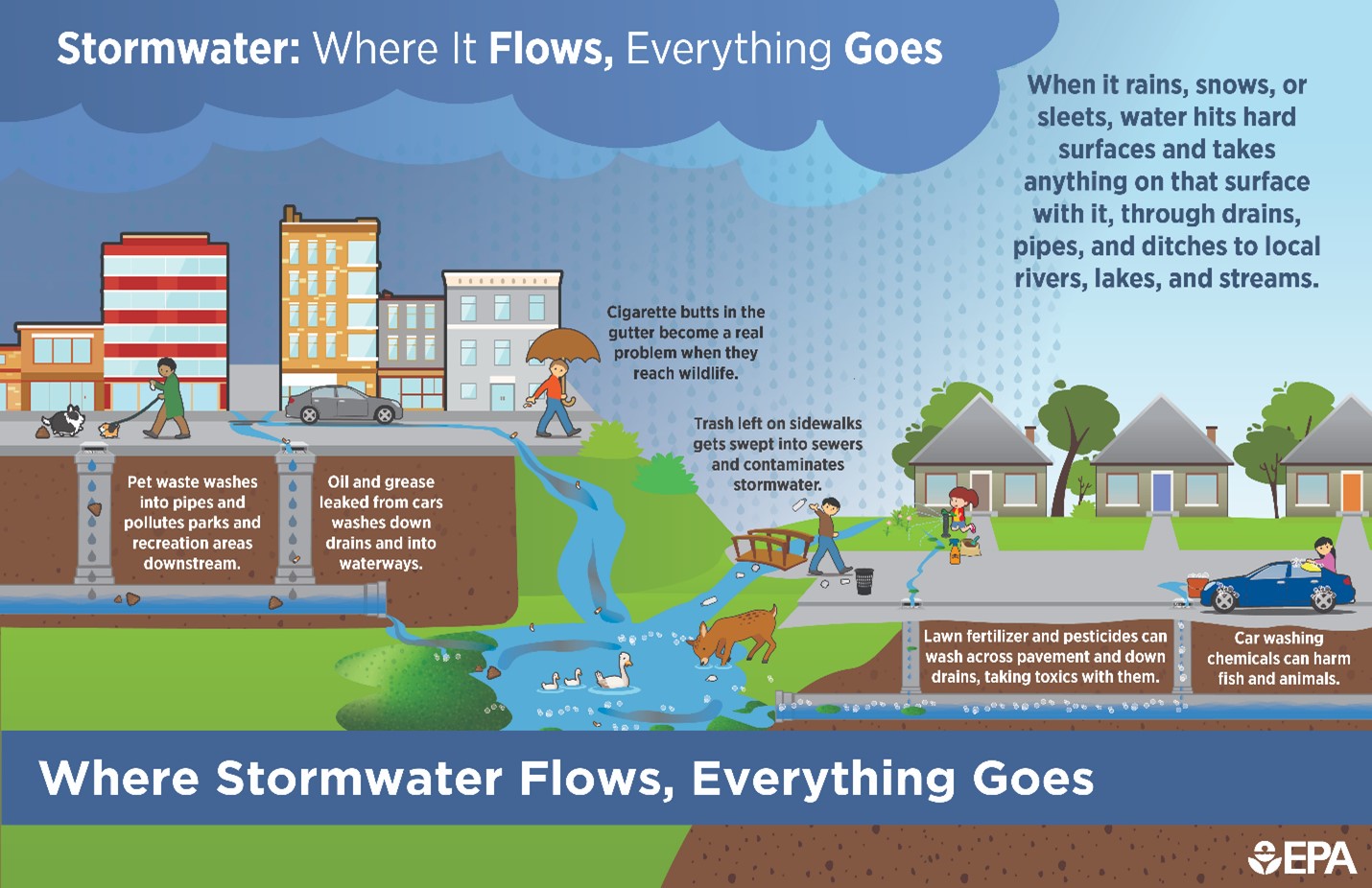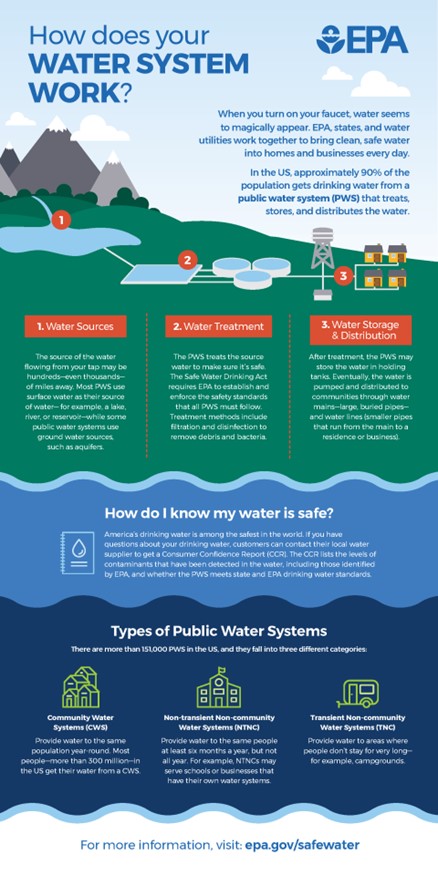WATER RESOURCES AND DRINKING WATER QUALITY
Staff Writer: Jennifer Murphy, VP Environmental Manager / OSHA Education Specialist Southwest Region
Jennifer Murphy earned her Bachelor of Science in Geology and Master of Science in Environmental Sciences (Environmental Management) from Oklahoma State University. She is a Qualified Industrial Storm Water Practitioner (QISP) with over 8 years in the environmental, health, and safety field. Jennifer’s primary professional focus is stormwater pollution prevention, as she is passionate about protecting our water resources. In her free time, you’ll find her at a national park, hiking and enjoying the great outdoors.
Water Resources and Drinking Water Quality
Stormwater runoff and wastewater are significant contributors to the pollution of drinking water resources in the United States. Surface water (such as rivers, lakes, reservoirs, streams, etc.) is the primary source of drinking water for many large cities. Groundwater, found in aquifers beneath the earth's surface, is another crucial source, especially for rural areas (Centers for Disease Control and Prevention, 2024; Encyclopedia Britannica, 2024). Stormwater runoff occurs when rain or snowmelt flows over impervious surfaces like roads and rooftops, picking up pollutants such as chemicals, oil, fertilizers, pesticides, and bacteria. This polluted runoff can enter surface water bodies directly or seep into the ground, contaminating groundwater. Wastewater generated from homes, industries, and agriculture can also introduce harmful substances into water sources. If not properly treated, wastewater can carry pathogens, heavy metals, and organic pollutants into our drinking water sources. The Environmental Protection Agency (EPA) addresses water pollution through the National Pollutant Discharge Elimination System (NPDES), established under the Clean Water Act. This program regulates stormwater and wastewater discharges from municipal, industrial, and construction sources; however, the NPDES program is not enough to ensure our drinking water supply is uncontaminated.
 Figure 1: Stormwater Infographic. Stormwater Smart Outreach Tools | US EPA. (2022, October 17). US EPA. https://www.epa.gov/npdes/stormwater-smart-outreach-tools.
Figure 1: Stormwater Infographic. Stormwater Smart Outreach Tools | US EPA. (2022, October 17). US EPA. https://www.epa.gov/npdes/stormwater-smart-outreach-tools.
To ensure the nation’s drinking water is safe for consumption, public water systems must comply with the Safe Drinking Water Act (SDWA). These National Primary Drinking Water Regulations set enforceable maximum contaminant levels for specific pollutants in drinking water or require public water systems to treat the water to remove the contaminants. The regulation includes requirements for water systems to test for contaminants in the water to make sure applicable standards are achieved (EPA Office of Water, 2015). The Environmental Working Group (EWG) compiled a database that contains results of drinking water samples obtained from roughly 50,000 water utilities across the United States. They identified over 270 contaminants in the tap water sampled. EPA’s legal limits currently only include about 90 contaminants, including microorganisms, disinfectants, disinfection byproducts, inorganic chemicals, organic chemicals, and radionuclides (EPA, 2024). The most recent update to these regulations was in December 2024, focusing on contaminants like PFAS (per- and polyfluoroalkyl substances). Despite stringent regulations, there are numerous contaminants not yet regulated. The EPA maintains a Contaminant Candidate List (CCL), which identifies unregulated contaminants that may require future regulation. These can include emerging pollutants like certain pharmaceuticals, personal care products, and newer industrial chemicals that current treatment processes may not fully remove (EPA, 2024).
 Figure 2: Water System Infographic. US EPA. (2017, October 26). Infographic: How does your water system work? https://www.epa.gov/ground-water-and-drinking-water/infographic-how-does-your-water-system-work.
Figure 2: Water System Infographic. US EPA. (2017, October 26). Infographic: How does your water system work? https://www.epa.gov/ground-water-and-drinking-water/infographic-how-does-your-water-system-work.
Stormwater runoff and wastewater that enter our surface water and groundwater pose significant challenges to maintaining safe drinking water in the United States. While public water systems employ advanced treatment processes to ensure water safety, ongoing monitoring and regulation updates are crucial to address emerging contaminants and protect public health. In the meantime, industry and the public can act. Industrial sites should maintain Stormwater Pollution Prevention Plans when applicable and implement best management practices, erosion and sediment control measures, conduct proper storage and disposal of chemicals and wastewater, educate employees on the importance of pollution prevention, etc. The public can also help by ensuring proper disposal of household chemicals and medications, using fertilizers and pesticides sparingly, and picking up yard trimmings and pet waste to prevent contact with stormwater.